Comments to the author David Young are welcomed.
(Editor's note: to fit in
the web page, the author's master images have been resized
and sharpened a little
to correct softness introduced by resizing.)
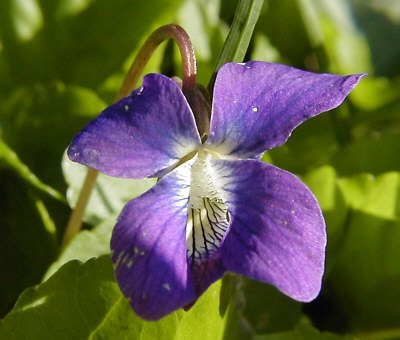
A spring flower in the violet family. |
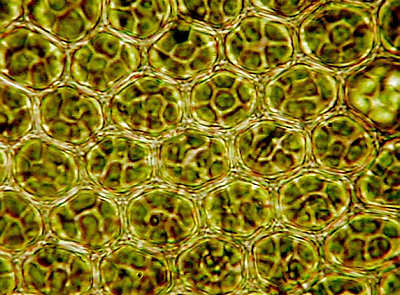
A moss leaf magnified 970x. I used Paintshop Pro to enhance the color saturation. (I basically made a duplicate layer, then applied the 'burn' function.) |
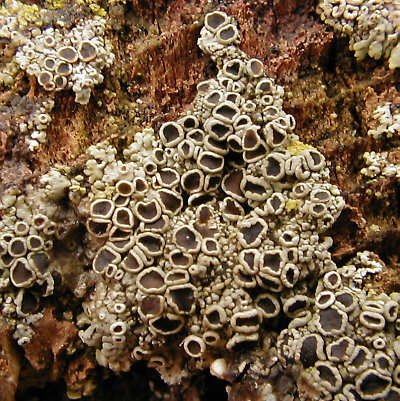
Lichen growing on a tree outside my home. |
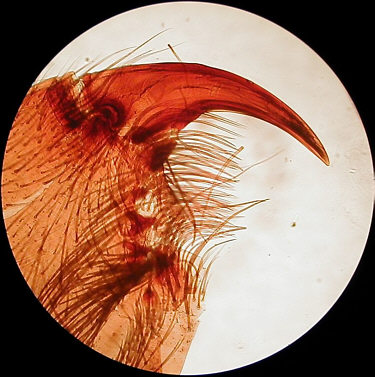
Jaw from the shed skin of a wolf spider, ca. 100x. |
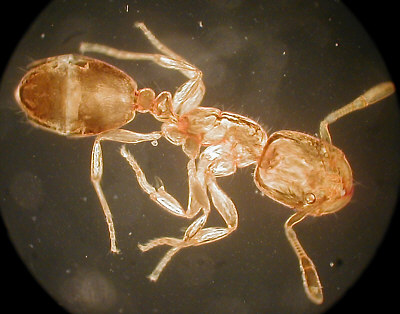 A thief ant, magnified 100x,
(10x objective with a 10x eyepiece.) It is my first successful attempt
at darkfield. The ant was collected in April of this year and was mounted
using nail polish. The image has been untouched save for cropping. To set
the scope up for darkfield, I simply cut a dark disk out of cardboard and
inserted below the stage of my AO microscope.
|
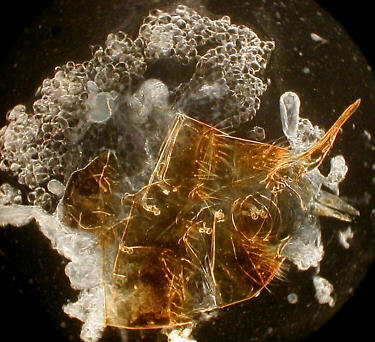
The sting from a red ant, Myrmica species. It was taken using darkfield and is magnified 100x. |
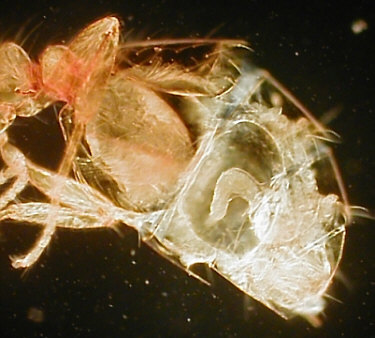
The abdomen of a thief ant. All the internal organs are visible; the crop, stomach and many of the glands. You can even see what appears to be strands of tissue securing the internal organs to the outside of the ant's body. |
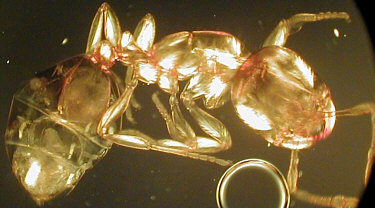
The thief ant under crossed polars to clearly reveal the muscles which are highlighted under polarized light. |